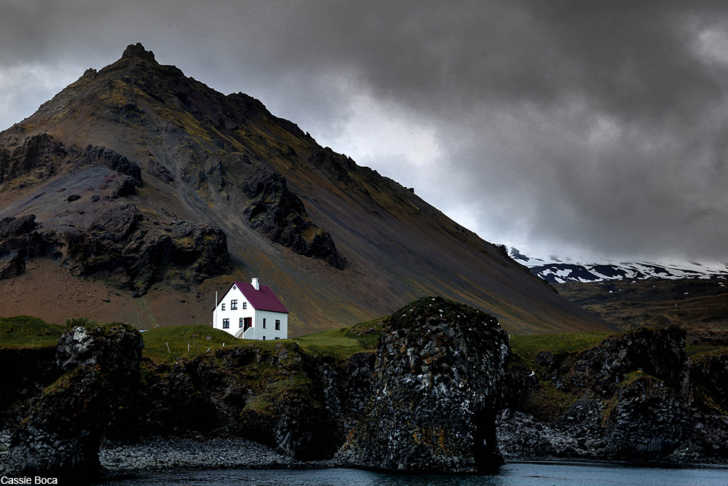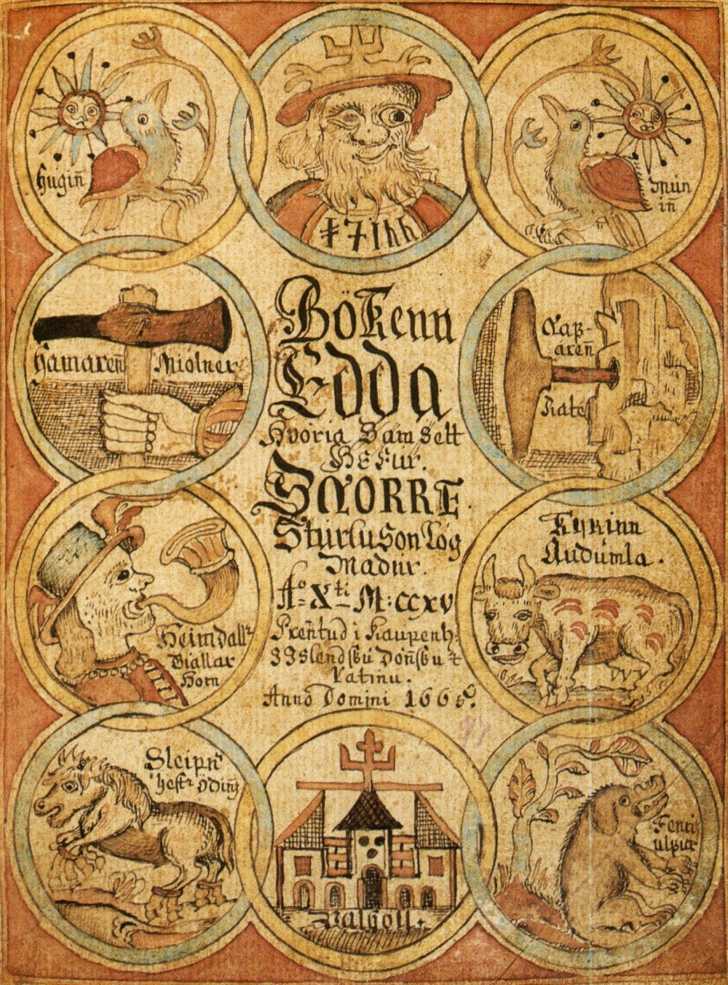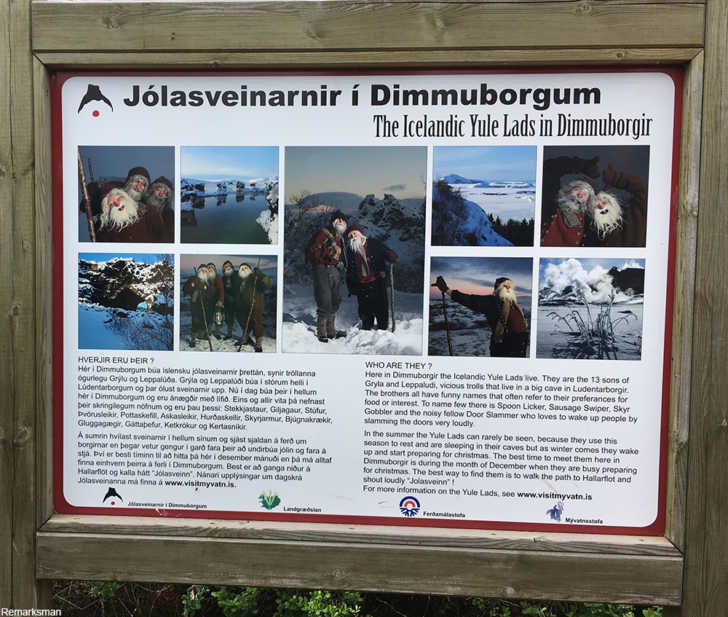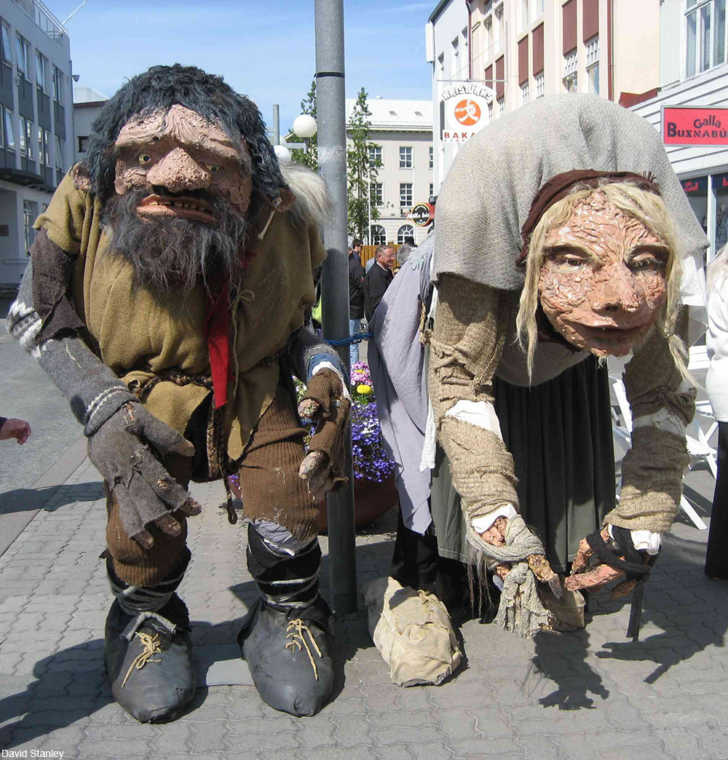Iceland’s Terrifying Christmas Witch
And she has a whole crew of destructive family members and pets to sow chaos.
Along with the jolly Santa figure that most of us grew up with, there are also some darker characters that were traditionally present at Christmas as well. In parts of Europe Krampus comes to homes alongside Santa on the feast day of Saint Nicholas to snatch up naughty children and deliver them to the underworld. But, for centuries the Icelandic witch, Grýla, has been associated with Christmas and not only is she more terrifying than Krampus, she also comes with her whole dysfunctional family (complete with an evil pet) to terrorize families at Christmas.

Grýla and Her Husband
Grýla in Norse mythology is a mountain ogre with ill intent towards humans and her name in Icelandic means “growler”. The first recorded reference to her came in the 13th century in the Icelandic book, Prose Edda, at which point she was not yet associated with Christmas. In many parts of the world mountain creatures both real and fictitious have been thought to possess special powers and immense fortitude in order to be able to survive the brutal winters at high altitude. At a later point she was also referred to as a witch. Mighty mountain witches, who live secluded from other beings, are common legends in many parts of the world, even the U.S. But, Grýla is a special kind of terrible.
According to the tales, she comes down from the mountain to steal naughty children, much like Krampus. She is often depicted carrying a basket on her back with which to collect the children. Instead of delivering them to the Netherworld, Grýla instead boils children alive which she consumes in a stew, as she is said to be constantly hungry. Her ability to detect the bad deeds of children is her superpower, one she does not use for good.

It’s not just children she eats. Grýla is said to be on her third husband, having killed the first two (one of whom she then ate). Her current husband is Leppalúði, a troll who is also fond of eating children as well as eating other mythical creatures. In many traditions this couple are depicted as giants, which makes them all the more terrifying.
The Christmas Cat
The pair have an evil Christmas pet that haunts villages as well, The Yule Cat (Jólakötturinn). This creature roams the countryside and devours anyone who isn’t wearing some new piece of clothing. This means getting new clothing at Christmas is essential in many Icelandic households, lest Jólakötturinn gobble you up for wearing old clothes.

Grýla became associated with Christmas in the 17th-19th centuries, a time when the Christmas holiday was gaining popularity around the world. In Iceland this period was a time of Danish-Norwegian rule when the country was part of a united Scandinavian kingdom. These areas included Norway, Denmark, Iceland, Greenland, and parts of Germany. Before that time she was associated with Yuletide, winter, and the uncertainty that the cold and dark bring, but not specifically with Christmas.

The Yule Lads
The supernatural couple are said to have 13 children which make up the Yule Lads (though Grýla has many other children from her previous marriage). The Yule Lads are the couple’s prankster offspring who play jokes on humans and steal their food, each with their own penchant for misfortune. Pottaskefill (Pot-scraper) steals the crust from the bottom of cooking pots, while Hurðaskellir (Dorr-slammer) just loves to unexpectedly slam doors in people’s houses.
Each Yule Lad is said to “visit” for a specific period of December. The one who hides in gullies waiting to steal milk (Giljagaur) comes from December 13th-26th. The Yule Lad who steals smoked sausages (Bjúgnakrækir) visits from December 20th-January 2nd. In some traditions the Yule Lads are as murderous as their mother, though today they are mostly seen as wild jokesters. However, in some homes the Yule Lads are seen as benevolent towards good children, whose shoes they fill with treats 13 days before Christmas.

While the folklore around Grýla has evolved over the centuries, today she is appreciated in a similar way to Krampus. In many Icelandic towns Grýla and Leppalúði are depicted using giant puppets or statues, their massive faces disfigured with warts and wrinkles and their presence is not restricted to only wintertime.

Learning about Grýla and Leppalúði and the 13 Yule Lads (not to mention the cat who will eat you if you don’t wear new duds) really puts into perspective the minor threat of getting a switch or a lump of coal in your stocking instead of gifts, doesn’t it? Just be glad if your house gets passed over by Grýla and her crew this winter.
SKM: below-content placeholderWhizzco for DOT

